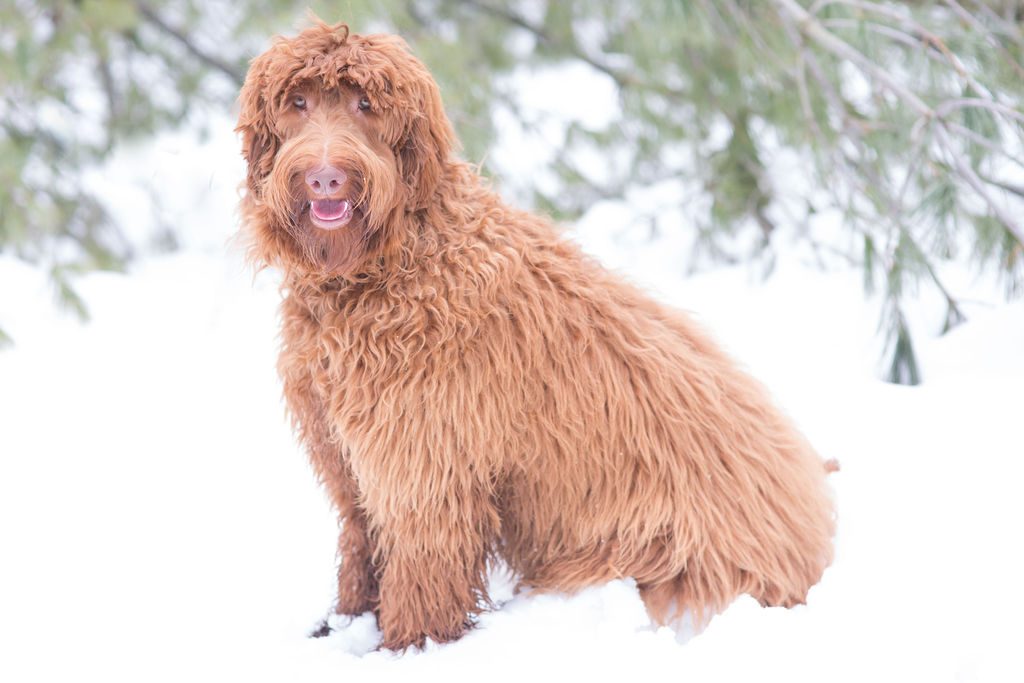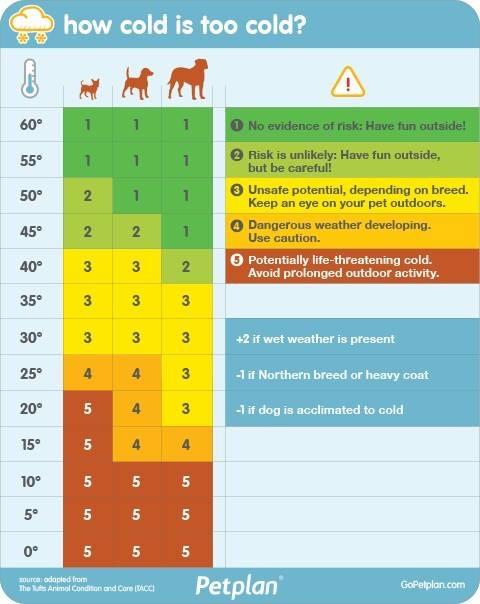
Winter has hit us in the Midwest and she isn’t being kind. Wind chills are reducing temperatures to the negative numbers, resulting in frigid conditions not suitable for a human, let alone your dog. It is important to know what signs to watch for that may indicate your dog is too cold and how to warm them up!
How Cold is Too Cold?
The easiest way to determine if it might be too cold for your pooch to handle is to take a walk outside. If it is cold enough that you are uncomfortable, consider how your dog might feel. Sure, many of them have long, curly coats to keep them warm, but their ears, noses and the pads on their paws are very susceptible to frostbite.

The age of your dog, the length of their coat, their body condition and much more will all factor into how much cool weather your pooch can handle. Older dogs and younger puppies are at high risk of cold intolerance. Check out this chart for a quick guideline as to what temperatures may affect your dog.

Just like with your dog, not every cold day is created equal. Things to keep in mind are wind chill, precipitation, cloud cover and your dogs activity level while in all of these conditions. If you are outside for a short period of time playing with your pet, they will stay warmer by running around. But if they are outside waiting for you to get home by the backdoor all day, they are not working up as much body heat to keep them warm. This can be very dangerous in poor weather!
Studies show that temperatures below 45 degrees F can begin to become uncomfortable for some dogs. Once the temps begin to drop below 32 degrees, those of you with smaller dogs, older or younger dogs, or dogs with shorter coats need to take notice! Temperatures below 20 degrees can lead to hypothermia and frostbite.
Signs of a Frozen Furbaby
What should you keep an eye out for when your pet is outside in colder temperatures? Like humans, shivering is a tell-tale sign that your furry friend may be a bit chilly.
If your dog is normally active and seems to have slowed down some after spending a large amount of time outdoors, they may be suffering from cold-related injury or illness. Excessive whining or anxiety are also signs of discomfort.
Frostbite and hypothermia are big concerns in cold weather, so it important that you know the signs of these issues. Hypothermia in dogs will display as a variety of symptoms such as weakness, shivering, inaudible heartbeat and difficulty breathing. If you fear your dog may be suffering from hypothermia, you need to transfer them to a warm area and cover them with lots of warm blankets.
Frostbite will most likely affect your pup’s paws, ears and tail, so be watchful for any signs. Your pup will be sensitive to the affected areas, which will have discoloration or blisters. If you fear your dog is suffering from frostbite, do not rub or massage the area. Move your dog to a warm, dry area and use warm (not hot) water on the affected area.

The best thing to do when the temperatures are chilly is to monitor your pet closely. Make sure they have a warm, dry place to escape winter weather and bring them inside when inclement weather will be present. As silly as it may seem, your pooch may appreciate a coat or boots to wear outside, especially in snow. And remember, if you are cold, so is your dog!







Leave a Reply